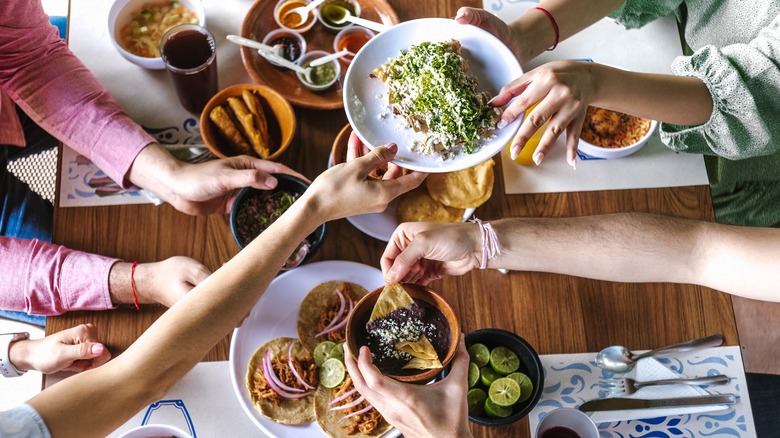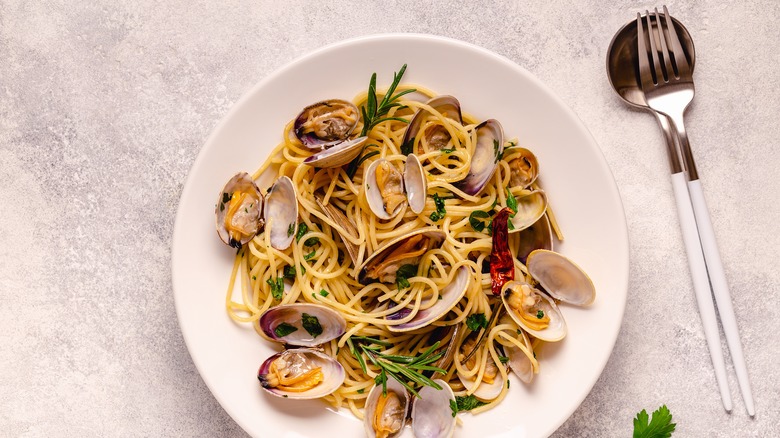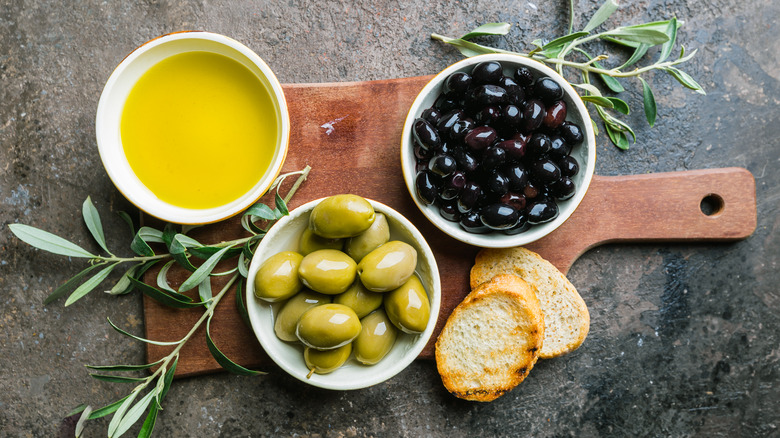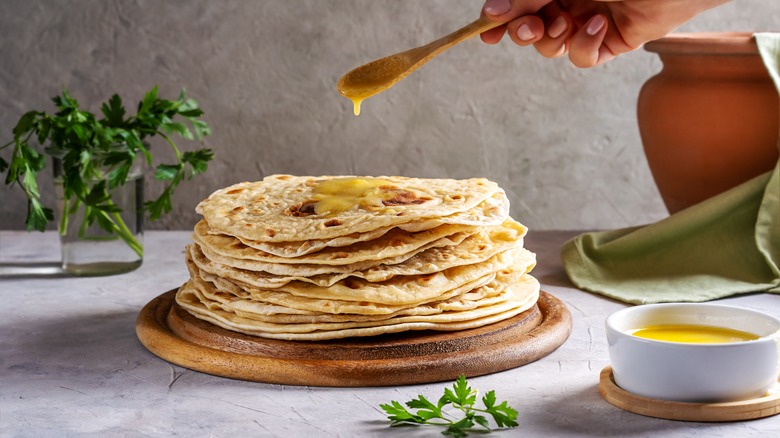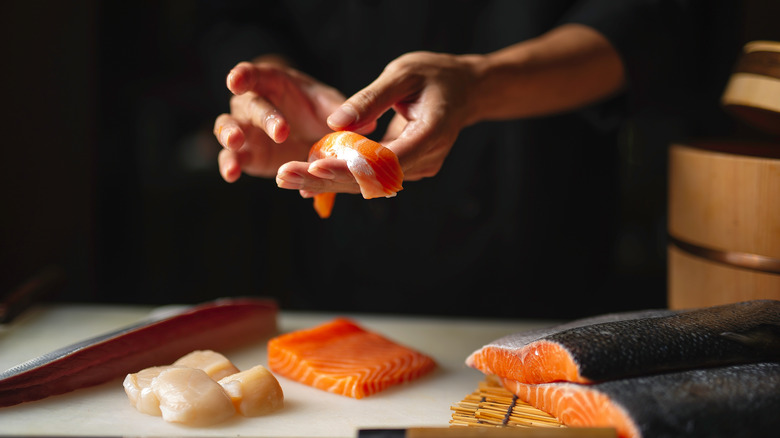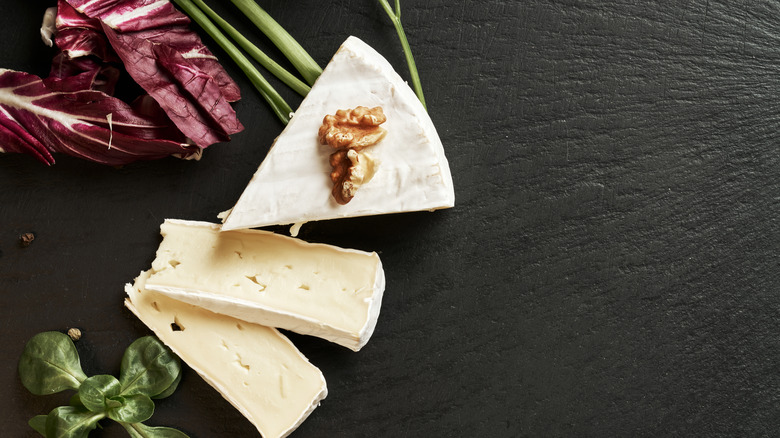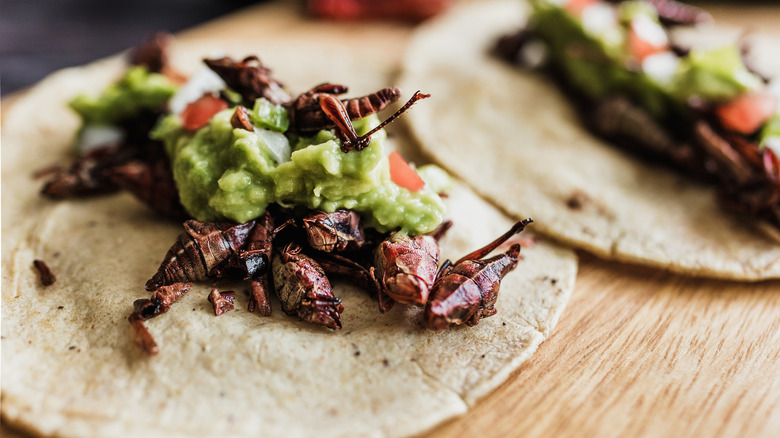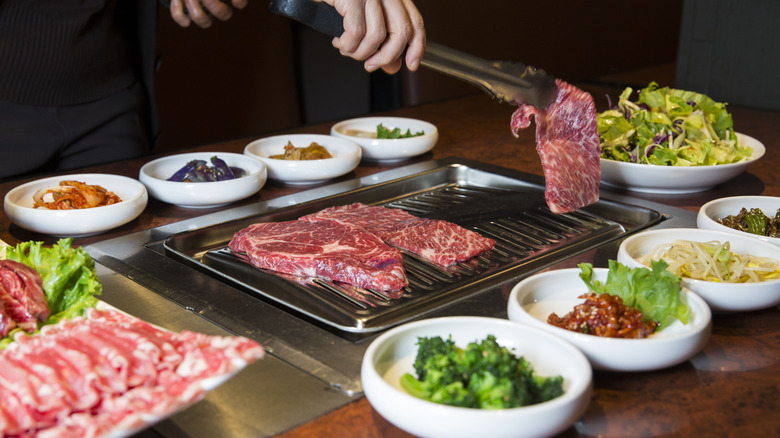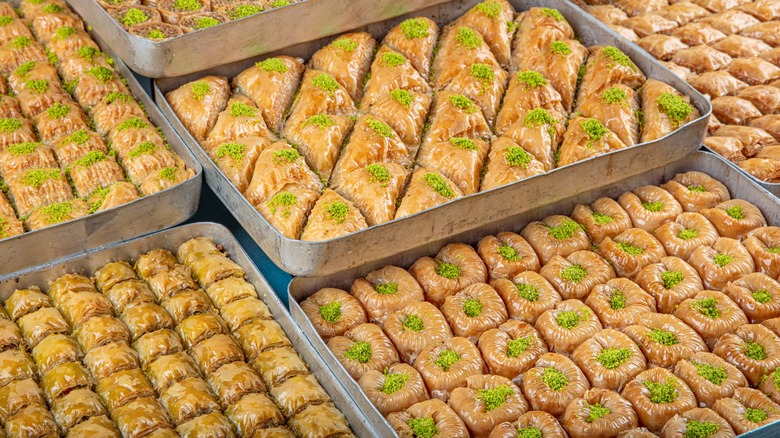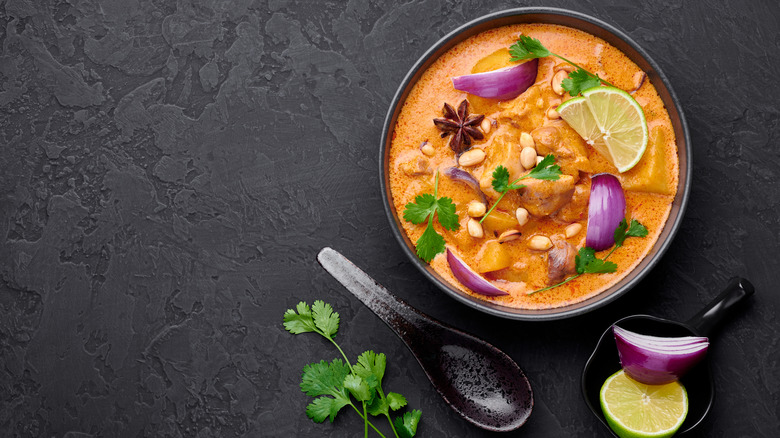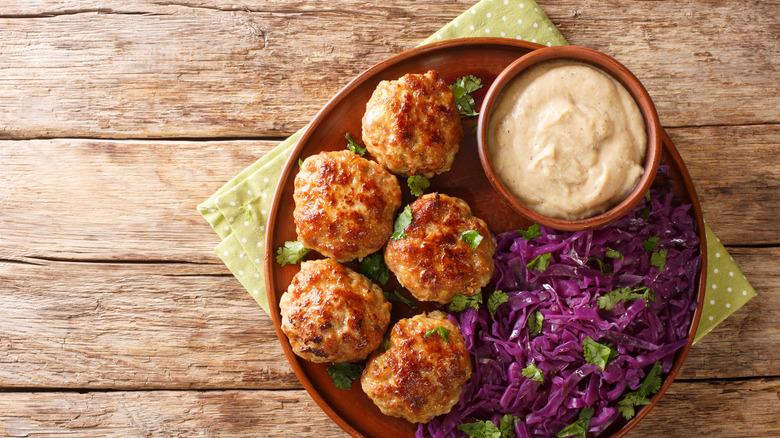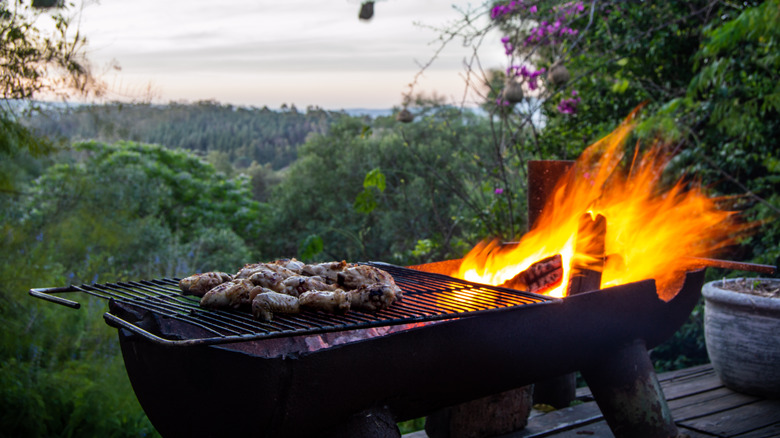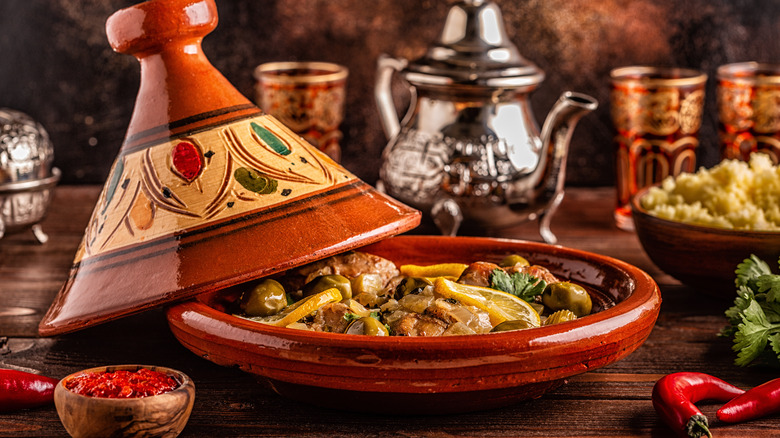13 Food Rules That Can Get Lost In Translation
The table is where we all come together. No matter where in the world we are, sharing a meal is an incomparable way of getting to know the locals better, the people we are traveling with, and even ourselves. However, as universal as food is, it is also an expression of local culture. Just as it happens with language, it responds to a historical, economic, and social context, and certain rules are followed in each country that might seem strange or incomprehensible to foreigners. These rules entail everything from the order in which dishes are served at the table to what items are considered edible or not.
Recently, Atlas Obscura called these rules Food Grammar. This means that when we travel, or even when we go to a restaurant in our own city, we might find ourselves confused or lost in translation, exactly the way we would be when facing a language barrier. Here are some food rules that we found fascinating, quirky, interesting, or all of the above.
When in Rome
As popular as Italian food is, there is plenty of interesting food rules most don't know about. Let's start with Italian coffee habits. Milk-based drinks, like cappuccinos and caffé lattes, should only be sipped in the morning, as per Frommer's. That's because Italians find them too heavy to consume after lunch or dinner when only espressos are acceptable. But no matter what kind of coffee you have, take your time to enjoy it. Like everything else in Italy, coffee is meant to be sipped with gusto, not on the go, explains Eat Like an Italian.
When it comes to sprinkling Parmesan on your pasta, there are certain limits, too. Pasta with truffles or with seafood, such as spaghetti alle vongole (clams), doesn't need the extra saltiness of Parmigiano, which is why your server will never offer any. Perhaps our favorite rule concerns a habit called a scarpetta. This consists of using bread to scrape the pasta sauce off your plate and make the most of every last delicious drop.
Que viva España
You've arrived in Spain and are ready for a series of excellent meals. The first thing you need to do is adjust your appetite to local meal times. The Spanish usually have a very light breakfast, consisting of coffee and bread or pastries, followed by lunch around 2:00 pm and dinner at around 9:00 pm. If it's the weekend, the conversation is lively, and the drinks are flowing, expect it to last until midnight.
Old-school neighborhood bars are where much of social life happens in Spain, both in large cities and small towns. People will gather here for a beer or a glass of wine and a few rounds of tapas. After all, it is here that the holy tradition of tapas was born, consisting of having a snack per drink, avoiding drunkenness (sort of), and trying all kinds of delicacies.
You may encounter a few unusual items on the tapas menu, such as percebes (goose barnacles) if you're hanging out in Galicia or the Basque Country, criadillas (deep-fried bull's testicles), and manitas de cerdo (pig trotters). And by the way, don't be shocked if you're drinking in one of these laid-back joints and see used napkins or olive pits on the floor. Someone will clean up eventually.
The Chinese way
The seating arrangement is a big deal when dining in China. According to China Travel, the best seat at the table — usually, the seat facing the entrance or the east — will go to the guest of honor or the oldest person in the family. The host will usually take the least important seat, perhaps the one closest to the kitchen. If you've been invited to dinner, you should wait for the host to show you to your seat. You may also notice a Lazy Susan at the center of the table. That's because food is usually shared, so this will make access to food much easier for everyone.
Once you've got your chopsticks in your hand, there are quite a few rules to remember, explains China Discovery. Never point at fellow diners with your chopsticks, or stab your food with them. Don't tap on your dish or teacup with your chopsticks, and don't hold them together as if they were a knife.
When you're done eating, it's important to remember to leave a little food on your plate. This is a kind gesture towards your host. If you finish everything, your host might think you're still hungry.
At the Indian table
For many travelers, India is a dream destination, and the food is just one of many reasons why. You'll have to remember a few rules if you visit this South Asian country. First, if you get invited to someone's house for dinner, arriving a little late (maybe 15 or 20 minutes) is perfectly fine. In fact, arriving on time might catch your guest in the middle of last-minute preparations. It's also quite common to get invited to stay for dinner when you're only visiting someone, as asking someone to stay for a meal is a gesture of respect.
Once the food is served, you will notice there are no courses, but food items are all served at the same time, either family-style or directly on your plate by your host. Specialties will vary from one region to another, but you will likely be served delicious flatbreads like naan or roti, as well as curries, rice, and pickles. At the Indian table, there is usually no cutlery, either. People eat neatly with their fingers (using their right hand) and use naan bread to scoop up food.
Ceremoniously Japanese
It's no secret that Japanese food is a source of delight, made with fresh, seasonal ingredients and tremendous care and effort. One of its main characteristics, as per JNTO, is balance, bringing out each ingredient's flavor instead of adding heavy sauces or doing complex preparations. Dish placement and arrangement are also important. The most vital dish is rice, which will be placed on your front left, the soup on the front right, and the sides will be placed behind.
There are also a few rules to remember when it comes to table manners, as the experience is meant to be memorable both for the host and the guest. You are allowed (and expected to) drink your miso soup straight from the bowl. You're also encouraged to slurp your noodles and make some noise — it shows that you're enjoying them. Finishing all the food from your plate is also a sign of enjoyment.
Be mindful of how the food is served and arranged, and follow that arrangement when you eat it (i.e., don't start from the bottom). Don't eat straight from a communal plate, either. Serve yourself a portion first. Pouring soy sauce over your white rice is not encouraged, either.
Bon appétit!
When eating in France, carb lovers will notice something wonderful — bread is a major element at the table. You will most likely find a bread basket on the table and a few rules to remember. You should never slice a baguette with a knife but rather break it apart with your hands. Also, if you're having foie gras, don't spread it on the bread, but place the slice of foie on it, warns Complete France. Bread will also accompany a cheese platter — crackers will never do the trick. And speaking of cheese, multi-course French meals usually include cheese before dessert. The French, by the way, don't remove the rind from the cheese, says The Culture Trip. So enjoy all of your Camembert!
On that note, if you want to try some unusual specialties, you can go for some tripe (veal stomach) or a classic like escargots (land snails) or cuisses de grenouille (frog legs). Whether you're feeling adventurous or staying on the safer side, you will be expected to eat everything on your plate. However, even if you really like the food, don't ask for seconds. Wait until your host/hostess offers more.
Made in Mexico
Mealtimes in Mexico present countless opportunities for sharing and connecting. Lunch is usually the main meal of the day and starts at around mid-afternoon. If time allows (especially during the weekend), lunch will consist of a multi-course meal that will extend well into the afternoon. This is called sobremesa: lingering around the table for coffee, drinks, and conversation. Make sure you order a carajillo prepared with espresso and Licor 43.
Mexican cuisine dates back centuries and can vary widely from one region to another, so you will find interesting specialties wherever you go. Don't be surprised if you're offered quesadillas with huitlacoche, which translates as corn smut. It's actually a deeply flavored ingredient and tastes great in an omelet, too. If browsing a traditional food market, you'll probably find some tacos filled with tongue, eyes, or cow brains. The most adventurous eaters swear these are tender and super tasty.
Other unexpected delicacies you will encounter may be insects, such as chicatana ants (usually used to prepare a smoky sauce), escamoles (ant larvae, which are delicious in tacos with guacamole), or chapulines (fried grasshoppers, an excellent source of protein).
Staying cool in South Korea
As it happens in other Asian cultures, the elder members of the community are highly respected in Korea, says Michelin. For this reason, it's a sign of respect to allow the eldest person at the table to start eating before everyone else. They'll pick up their chopsticks and mark the start of the meal. Chopsticks, by the way, should never be used as skewers nor used to stab the bowl of rice. This, explains Asian Inspirations, is a funeral ritual and should be avoided. Don't poke around the communal dishes with your chopsticks, either. Serve yourself a portion and eat it from your dish.
One of the great joys of Korean food is its many side dishes, an assortment of kimchi, bean sprouts, tofu, and pickled vegetables. Most restaurants will serve these for free, so dig in and don't be afraid to ask for extra helpings! And when you're passing dishes around, make sure to use both hands as a sign of respect to your fellow diners.
Turkish Manners
Hospitality, explains Rough Guides, is at the heart of Turkish culture, so someone will likely invite you to drink tea at a teahouse or at their house. In fact, if you're invited to dinner at someone's home, it's considered a true honor. To make a fine impression, remember to remove your shoes when arriving. You may notice that some homes have low tables with cushions around them (instead of tables and chairs); if this is the case, make sure your feet remain hidden under the table.
Your hosts will probably offer multiple servings, and you should try to accept as many as possible, says Cultural Atlas. Expect dinner to be a slow, relaxed affair. Turks like to enjoy their meals and sometimes even stop between courses for a drink or a cigarette.
During your visit, you may come across some unexpected delicacies, such as kokorec (stuffed intestines), Iskembe Corbasi (tripe soup), or Tavuk Gogsu (chicken dessert). This last one may sound confusing, but it's a creamy dessert with milk, sugar, rice flour, and shredded chicken breast. It has a fascinating history, dating back to the Ottoman Empire.
Thai Etiquette
Eating in Thailand is one of the most enjoyable parts of any visit. And while most travelers will be looking forward to the classics, like curries, pad Thai, and summer rolls, plenty of surprises can be found. Look no further than Tum Kai Mot Daeng, a red ant egg salad served with fresh herbs. If you're more of a carnivore, try the Larb Leuat Neua made with minced beef and a dollop of uncooked blood, which you'll find in the North and Northeast of Thailand.
Whatever you're eating, you'll most likely realize that meals in Thailand are a social event, a time for hanging out and relaxing. Group meals are expected to be shared, so don't order for yourself. Of course, you can always make a suggestion if something catches your eye. Make sure you use your left hand for your fork and your right hand for your spoon, as it is the primary utensil.
Dine as a Dane
Denmark is home to some of the most celebrated restaurants in the world, like Geranium, recently crowned best in the world by the World's 50 Best Restaurants, and the iconic Noma. But locals are also proud of more humble staples, like their street hot dogs. The classic Danish hot dog, says Scandinavia Standard, will feature a pork sausage topped with remoulade, onions (fried and raw), mustard, ketchup, and pickled cucumber. You can ask for a roasted sausage or have it wrapped in bacon, and it will probably taste even better after a night on the town. Speaking of which, bar-hopping nights in Denmark are best when they start with a shot of Gajol, a licorice-flavored vodka.
Now, if you're invited to dinner at a Danish home, things may have to be more low-key — think fewer shots, and more friendly conversation. Make sure to arrive right on time. You will probably be expected to take your shoes off, too. Danishnet suggests you offer to help in the kitchen and try every dish you are offered. Remember to finish everything on your plate, too.
South African Style
In South Africa, dinner is the main meal of the day, while on the weekends, it's all about braai, an outdoor cookout that is also an important social hangout. If you are invited to a braai (barbecue), you can expect to taste all sorts of grilled delicacies, such as steak, lamb, sausages, goat, and even ostrich. Make sure to bring a gift for your host, like a bottle of wine or flowers. It's important to finish everything you've been served, as it shows that you've enjoyed the food. Also, remember to compliment the food and your host's hospitality.
South African dining culture is a reflection of the country's diversity. Some of the dining traditions are similar to that of the British, such as meal times, and many people enjoy afternoon tea. Also, some South African cultures follow a hierarchical sequence when it comes to serving food, explains Cultural Atlas. This means the guest will get served first, followed by the eldest male, the rest of the men, then the kids, and lastly, the women.
Moroccan Codes
A feast of herbs and spices, Moroccan food is a fascinating reflection of the country's rich history. One of the most prominent herbs in this cuisine is mint, and in fact, you will find that you'll be offered mint tea frequently if you visit this country at social events, homes, and markets. According to The Etiquette Consultant, the traditional mix is made with green tea leaves, mint leaves, and sugar, an important part of dining culture and hospitality in Morocco.
Many meals in Morocco are eaten with your hands or using pieces of bread to scoop up the food. When eating a tagine, for example, you can use a piece of bread to scoop up the tagine and mop up the sauce, says Morocco Local Insider. Remember to use your right hand to eat, as the left hand is considered unclean in Islamic and Arabic cultures, explains Frommers. Also, remember that when you are offered food, you are expected to politely decline the first time, then graciously accept the second time you are offered. It's also polite to reciprocate and offer food back.
